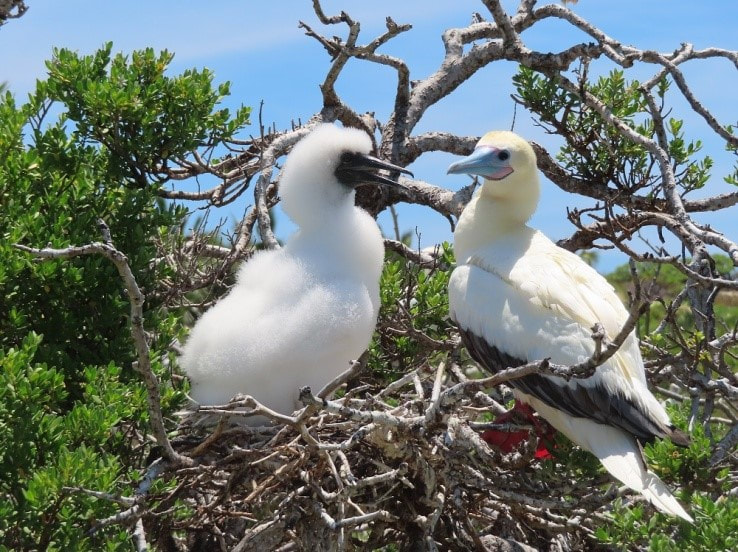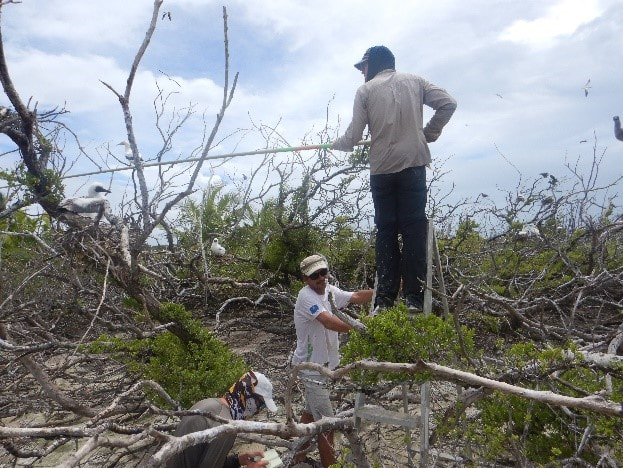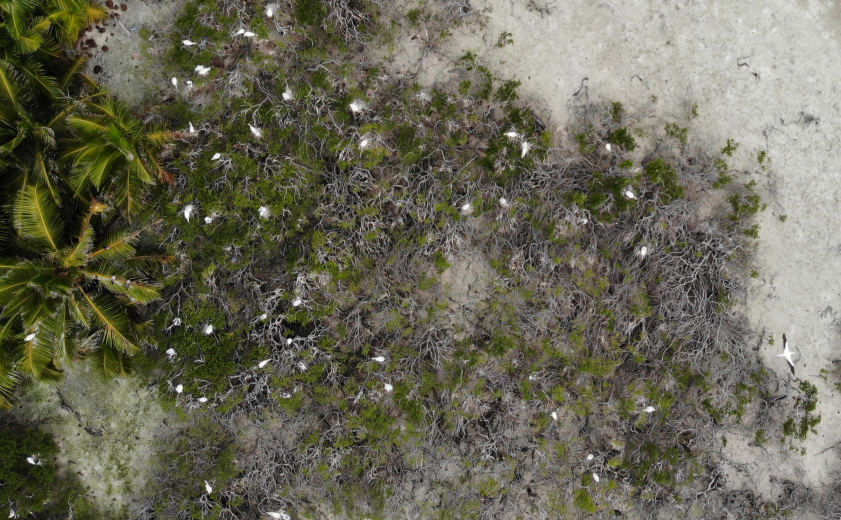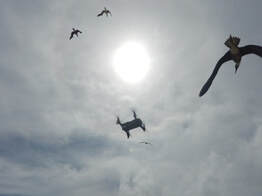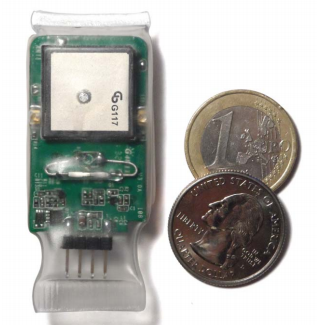|
The Island Conservation Society (ICS) has recently partnered with Professor Mathieu Le Corre (Université de La Réunion) to carry out a two-year research project on the Red-footed Booby (Sula sula) of Farquhar Atoll. The research will explore their abundance, habitat selection and movements at sea, using GPS devices, drones and genetic sampling. The project is supported by the Islands Development Company and the Farquhar Foundation and is being funded by the Seychelles Conservation and Climate Change Adaptation Trust (SeyCCAT). Results from this study will provide a vital understanding of the seabird populations and marine ecosystems of Seychelles. Farquhar is located 770km SW of Mahé and is considerably closer to Madagascar than Seychelles, which is only 180km away. The atoll supports 10 islands in total, but 98% of the landmass is made up by two large islands, Ile du Nord and Ile du Sud. The atoll is rich in life and supports some of the best fisheries in the region, as well as high densities of turtles and seabirds. Ile du Sud has become increasingly important over the last 5 years due to a huge expansion of Red-footed Boobies which have increased from around 100 pairs to more than 10,000. Red-footed Boobies or Fou bet in creole, are a large species of seabird which are vital indicators of marine health and the condition of fisheries. Once common across several islands in Seychelles, breeding populations are now restricted to the most remote locations, mainly Cosmoledo, Aldabra and Farquhar. Their reduced distribution is human induced, caused by; habitat loss, human consumption and overfishing of foraging grounds. The first task is to calculate how many breeding pairs are currently present on Farquhar, this is very difficult as the colony is distributed over impenetrable Bwadamann (Pemphis acidula). A traditional method of circular plots will be used to attain average nest densities per 100m2, these figures can then be extrapolated to estimate colony size. However, a more novel method is under trial by using drone technology. Through systematically mapping the colony with high-resolution images it is possible to count every nest, minimising the need for estimations. To further compliment these assessments, remote camera traps will be deployed at night to collect data on roosting birds, previously never studied.
Conclusion: Thanks to modern technology we are now able to study seabird populations to a depth previously unknown, collecting information which not only compliments conservation, but also socio-economic agendas. Their incomparable movements at sea offer a unique insight into marine ecosystems, furthering our understanding and providing information needed for effective management.
Thank you to the Islands Development Company and the Farquhar Foundation for their unwavering support towards this project.
0 Comments
Your comment will be posted after it is approved.
Leave a Reply. |
Categories
All
Archives
June 2024
|

